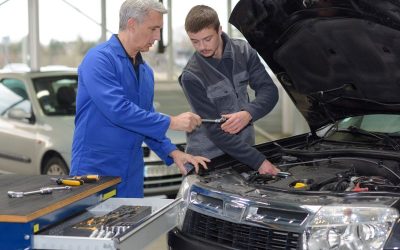Car owners tend to get aggravated when they need Brake Repairs in Lansing MI, but this kind of work should be viewed as routine maintenance. Brake parts can be expected to wear out eventually if the vehicle owner drives an average number of miles or more each year. When signs of trouble are noticed, the owner may be able to wait until a discount sale for brake repair work is advertised by a reputable garage. It’s best not to wait very long, however. Further damage can be done when continuing to use brakes that have deteriorated, and that can cost substantially more money to repair, wiping out any savings from a discount sale. In addition, brakes obviously are crucial safety features and should be in good working order at all times.
Getting at least a little bit educated about brake components and repair work is a smart idea. Before bringing a car in for Brake Repairs in Lansing MI, the owner may want to understand the basic difference between disc and drum brakes and to learn which type are on the car.
Viewing brake components for the type installed on the vehicle is helpful. The components will vary depending on whether the car has disc or drum brakes. In the diagram, the person should see rotors, calipers, and pads in disc brakes. Drum brakes include shoes, wheel cylinders, and drums. There also are hoses and lines, and the master cylinder, which is located under the hood. Mechanics may call pads and shoe linings when they talk with the customer.
Symptoms of brake trouble usually are subtle at first and rapidly get worse. Unusual sounds and changes in the feel of the brake pedal are the two main signs. The person may notice squealing or grinding noises when applying the brakes or a chirping noise while moving in reverse or driving at low speeds that stop when the brakes are applied. The brake pedal may start to feel spongy or pulsate instead of grabbing firmly. These are all indications that it’s time for an appointment with a garage such as Liskey’s Auto & Truck Service.








